Best Siemens EV chargers
Siemens is one of the most significant global players in the field of manufacturing and supplying electric vehicle charging stations. The company has been active on the market since 20131, with a range of products for both individual use or installation at home. Siemens electric vehicle chargers are designed to charge all types of battery packs for e-cars2.
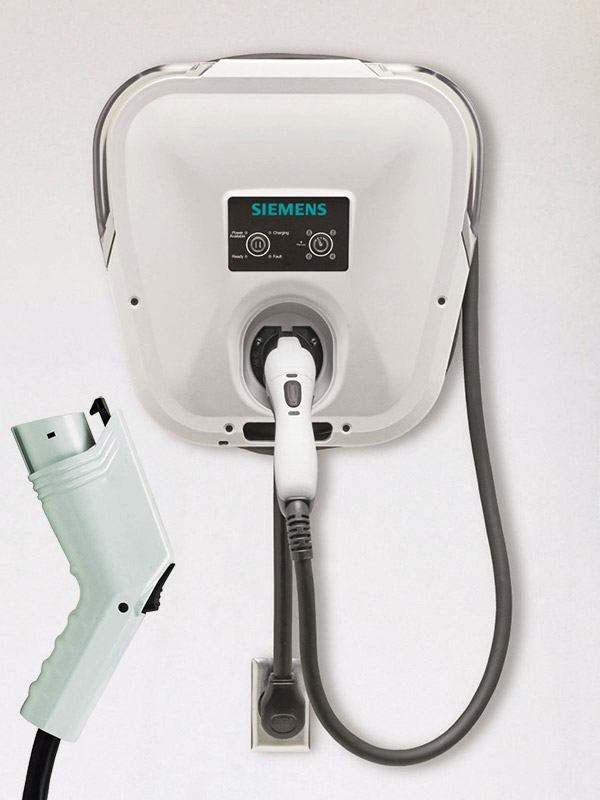
Siemens is a global powerhouse in the engineering and electronics industry. It has been known for innovation and engineering excellence for more than 165 years. Siemens’ broad portfolio of products and services ranges from medical equipment to power generation, with its headquarters located in Munich, Germany. The company offers both direct sales on their website as well as retail chains such as Home Depot and Lowe’s in North America.

Siemens Level 2 is 240 Volts AC which is what you get at home or most commercial charging stations. Planning to visit an EV network? Learn how to use a public charging station and stay polite?

Siemens Level 1 is 120 volts AC which are the J1772 extension cords that come with your car. The owners manual for your vehicle should have a label on it saying how many amps to pull safely from an outlet when plugged into one of these cords. If you want to look up amp recommendations by make and model there’s a great calculator here. Generally, an overnight charge should be no more than 8 hours on Level-1 charging.

Siemens has been in the EV car charger business for years3 and have seen a lot of chargers come and go. What makes our Level 1 and Level 2 EV car chargers different? Five reasons, to be exact. The first is fast charging at 16 amps with 220 volts, which means you can expect about 10 miles per hour charged while plugged into this model. No other charger comes with a level 1 adapter that plugs into 110v outlets (NEMA 5-15) like ours do so you can charge your vehicle anywhere there’s an outlet available without needing any special adapters or converters. All electric cars coming out now use universal plug type SAE J1772 which we guarantee will work on all models currently being.
Calculation of charging time for popular cars with Siemens charger
| Siemens US2 VersiCharge 30 Amps | Siemens VersiCharge 48 Amps | Other Chargers • 16 Amps | |
|---|---|---|---|
| Nissan Leaf | 7 h 3 min | 7 h 3 min | 12 h 14 min |
| Tesla Model Y | 5 h 13 min | 4 h 52 min | 9 h 52 min |
| Chevy Bolt | 6 h 53 min | 6 h 53 min | 13 h 2 min |
The calculator on the site will help make calculations for other models of electric cars.
Review of the Siemens US2 VersiCharge
The Siemens US2 VersiCharge Electric Vehicle Charger is a high-quality product that has many features and benefits. Some of the pros of this charger are that it is easy to install, it has a sleek design, and it is very reliable. The cons of this charger are that it is a bit pricey and it can be difficult to figure out how to use some of its features.
It’s compatible with Tesla vehicles with the Tesla charging adapter. The charger is compatible with all J1772 complying cars and comes with a three-year warranty. It’s user-friendly and more convenient than many other chargers on the market.
The Siemens US2 VersiCharge is the best electric vehicle charging station on the market, as rated by The Wirecutter. The 20ft charging cable is convenient to use, and it comes with a mounting bracket and NEMA 6-50 plug.
This fast-charging station can provide up to 30 amps of power, which is four times faster than a standard 120V charger. The 2/4/6/8 hour delay and pause functions are included on the front of the charger, making it easy to use. The operating temperature range of -30°F to +130° C makes it perfect for any climate.
Overall, the Siemens US2 VersiCharge Electric Vehicle Charger is a high-quality product that is sure to please anyone looking for an electric vehicle charger. It is easy to install, looks great, and is very reliable. While it is a bit pricey, the cost is worth it for all the features and benefits this product offers.
The Best Siemens Alternatives
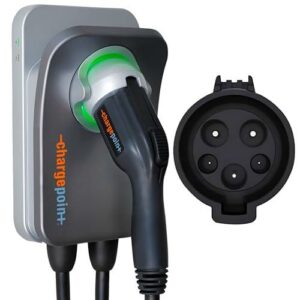 | 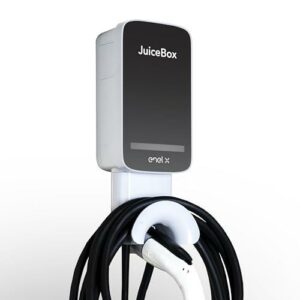 | 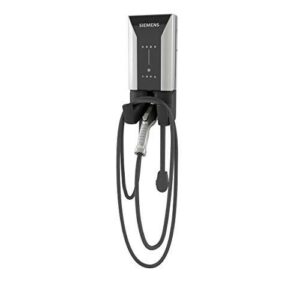 | 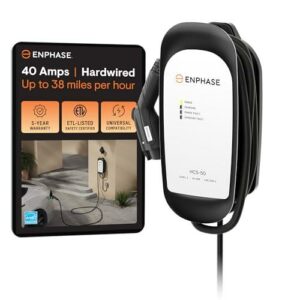 | 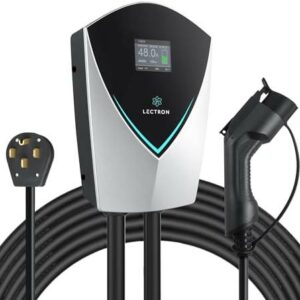 | |
| ChargePoint NEMA 14-50 plug/hardwired Home Charging Station... | JuiceBox 40 Hardwired Smart EV Home Charging Station (40 Am... | Siemens VersiCharge Level 2 Hardwired EV Home Charging stat... | ClipperCreek Level 2 Hardwired Electric Vehicle (EV) Home C... | Lectron Level 2 Electric Vehicle (EV) Charging Station (240... | |
| Enclosure Material | n/a | ||||
| Weight | 17.6 | 21.2 | 17 | 14 | 19.06 |
| Warranty | 3 years | 3 years | 3 years | ||
| Certificate | UL certificate 20190607-E328478 issued 06/07/2019; Type 3R per UL 50E; ENERGY STAR qualified 06/25/19. | UL & Energy Star | cUL listed | ENERGY STAR, ETL and cETL | Energy Star Certified |
| Wi-Fi | Yes | Yes |
Contents
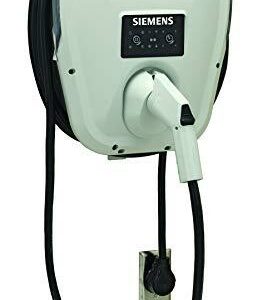
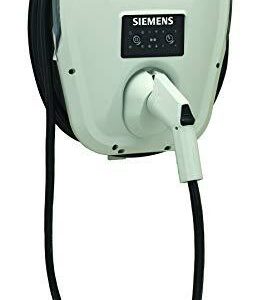
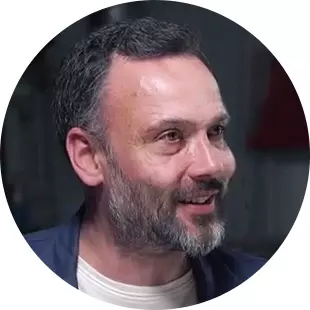
Can i convert a 120v circuit to 240 by installing the breaker, taping white wires with black or red tape, and converting receptacles to 240 volts? I know, i should be very sure that it’s safe as there is no safety ground wire in this case; not like when we use an adapter for our Siemens charger which has its own grounding connection…
It’s not that hard. I’m not a professional electrician, and I did it myself. But if you’re not intimately familiar and comfortable with the electrical code, then don’t do it. Leave it to the professionals.
Hi,
I’m undecided on the type of Electric Vehicle Charging Box to purchase. What do you think of the Siemens VersiCharge AC Series 48-Amp EV Charger Level 2 Indoor/Outdoor with 20 ft. cable NEMA 6-50 Plug delivers up 48amps of power and is equipped with J1772 connector enabling rapid charging? What type of Charging Box do you recommend? I’m interested in the Mustang Mach E and the Chevy BOLT EUV. I probably won’t pull the trigger on an electric SUV until Apr/May 2023.
A little clarification, 40 amps will be available for the NEMA 6-50 outlet (see 80% rule). Since you’re going to be buying an electric car in a year, it makes sense to look at the AC input limits at the time of purchase. In any case, the Siemens charger model you mentioned has proven to be excellent. Consider connecting the charger directly to the power grid (60A breaker), then you’ll get the most comfort from the 48 amp charging speed. Or look at dual chargers if you want to charge Chevy and Mustang.
Is this unit possible to be hardwired? Is this unit only capable of using a plug?
You could probably hardwire it in, but that wasn’t an option for our application. To remove the cord you would need to disassemble the unit. Who knows what warranty that would mean. There was no instruction on how to hardwire it.
Is there a gfci system built into the unit? Although i will store unit in my garage, the cable will still be exposed to the elements outside.
It doesn’t. GFCI is a type breaker you can install in your panel. This feature is not available in appliances. GFCI stands for always supply side (at an outlet, breaker etc). If you’re installing outside, there are specific codes that will outline how the wiring should be done, what wire to use, and what type of breaker to use.
Is it easy to set charge rates? For instance, I might charge 2.5 kW most days but switch to 6.6kW for certain days.
It is quick and simple for me to adjust the charge rate. The previous version of the charger has the same charge rate adjustment method. To keep the front cover closed, I removed the four screws from the front and used spring clamps that you might use in your woodshop. To adjust the charge rate, I take out the spring clamps (3 second), lift the cover (it’s hinged on top), and grab my little screwdriver that I left behind the front cover. I rotate the “switch” (5 second), then set the screwdriver to the lowest position, cover it, and clamp it on (5 second). Done. This is an important feature in our situation. I have changed the charge rate hundreds times to meet my current needs.
This extension cord can be used. There is a 240V dryer outlet in my garage. However, it’s near a cabinet so there is no wall space.
Yes. This is from an electrician. A minimum of 10 Gauge SO would be required, but due to the charger’s ability to draw close to maximum current for extended periods, I recommend 8 Gauge SO. This can be hard to find. If your Dryer uses the same socket, you will need a NEMA L14-30 amp rated plug. It is important to note that the plug consists of a pair Hot conductors, a Neutral and a ground line. Most Electric Dryers use a NEMA 50 which only has a pair Hot conductors and a ground, but NO NEUTRAL. This may render it useless as a charger because a Neutral is not required.
I just purchased an electric car and need to install a 30a ev charging station in my garage. Is this unit easy to plug in to the garage’s electrical outlet?
This unit, like all Level 2 EVSE units requires a 240V circuit. This model plugs into the 6-50R receptacle. It is a 3-prong, fat receptacle that can be used in dryers. Some welders also use this type of receptacle. The circuit breaker must be a 40A. Because I had access to my garage subpanel, I was able install the circuit breaker, wiring, and other necessary components myself. However, if you don’t have the right access or are not sure how to wire it, a professional will help. A direct hardwire version is available that bypasses the plug and wires directly to the circuit.
What’s siemens versicharge?
The next generation of VersiCharge AC chargers from Siemens is now available. It features a better design, improved features, faster charging and greater reliability. All this at a very affordable price. VersiCharge AC chargers will charge your entire day.
How can you use Siemens VersiCharge.
Mount the VersiCharge using the Mounting Bracket. First, hook the bottom of your unit into the slot. Then hook the top into the tab. Use the provided screws to attach VersiCharge on wall and bracket. Connect the VersiCharge to the receptacle.
How can I reset my Siemens VersiCharge
Siemens VersiCharger – Fault Light – Resolution (Replacement)…
1. Soft-Reset: Double-press the “Pause” button. Retry.
2. Power Cycle : Unplug line power. Retry again.
3. Hard-Reset: Unplug the line power. Wait 2 hrs. Retry.
Siemens VersiCharge has wifi?
Communication: The Siemens VersiCharge SG SG with WiFi has a CEA2045 module that allows communication through the Siemens Cloud to provide actionable information via a smart phone, or via web pages. Remote control: The Siemens VersiChargeSG makes it easy to charge an electric vehicle.
I have a Siemens 30A VersaCharge. The cord has fried, and I need a replacement.
Can you please advise me how to procure one.
Siemens VersiCharge how many kw?
The Siemens VersiCharge allows you to adjust the EVSE power output to meet your facility’s requirements. The maximum power setting is 7.2 kW, but can be adjusted to 1.8 kW. The integrated holster keeps debris and dust out of the plug. The 60% recycled material is durable and easy to clean.
Back in 2021, I invested in the Siemens US2 VersiCharge Electric Vehicle Charger for my garage. Performance-wise, it’s been stellar. It delivers on the fast charging promise. However, I did struggle with the setup initially, and the price did make me second guess my purchase. Nonetheless, it’s served me well for two years now. Anyone else here have long-term experiences with it?
I’ve had mine for just over a year. Agreed on the setup challenges, but once it’s up, it’s smooth sailing. The reliability is impressive, and in my opinion, the price is justified considering the product’s quality.
I’ve been contemplating switching to the VersiCharge AC Level 2 for home charging. Mainly intrigued by the faster charging capabilities. But, is it significantly quicker than the US2? Would love some real-user feedback before I make the jump.
I made that switch six months ago. It’s noticeably faster, especially if you frequently deplete your battery. For daily top-offs, it might not make a huge difference, but for someone like me who drives a lot, it’s been a game-changer.
For those struggling with the Siemens app, here’s a tip: When monitoring kWh consumption, ensure your device’s location settings are accurate. The app often pulls data based on your location, and it can get wonky if there’s a mismatch. It took me a week to figure this out. Hope this helps someone out there.
While Siemens does have a stronghold on the market, I’m curious about other brands offering similar or better functionality. My main criteria are reliability, speed, and a user-friendly app interface. Any suggestions?
You might want to explore ChargePoint Home Flex. It’s been reliable for me, and the app interface is pretty straightforward. It’s a worthy competitor to Siemens, in my opinion.
Recently installed the Siemens-VersiCharge Indoor/Outdoor EV Charger. I love the Wi-Fi feature, but it keeps dropping connectivity. Has anyone else faced this? Is there a fix?
Currently torn between the Siemens VersiCharge and Tesla Wall Connector for my new Model Y (with an adapter for Tesla). I value charge speed and long-term reliability. Thoughts?
I’ve tried both. Siemens offers consistent performance, but if you’re mainly charging a Tesla, the Wall Connector integrates better and, from my experience, offers slightly faster charging times. Both are reliable, but integration-wise, Tesla edges out for me.
If you’re self-installing any Siemens charger, invest in good quality tools and brackets. Makes the whole process smoother. Learned this the hard way.
For those using the Siemens-VersiCharge Indoor/Outdoor, there’s a firmware update rolling out next week. Aimed at improving Wi-Fi connectivity and adding some minor features. Stay updated!
Thinking of setting up a group purchase for the Siemens VersiCharge AC Level 2. We might get a decent discount with bulk orders. If you’re in the New York area and interested, drop a line.
Just a heads up, always inspect the charging cable of your Siemens charger. Noticed minor wear on mine after a year. Replacement cables are available but better to catch issues early.